|
Displaying items by tag: collector
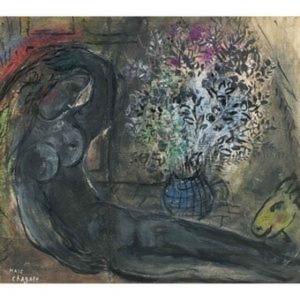
Marc Chagall’s (1887-1985) Le Nu au Bouquet, which was stolen in 2002 from a yacht moored in Italy, has been recovered in a private collector’s home. The robbery occurred while the boat, which came from the United States, was being repaired in northern Italy’s port of Savona. The thieves replaced the painting with a forgery.
Following the death of the yacht owner, his heir traveled to Italy to recover the boat and its contents, ultimately discovering that the Chagall painting had been replaced by a fake. The heir alerted the Italian police, but news about the painting didn’t surface until 2012 during an investigation into Bologna’s stolen art trade. Investigators were able to trace Le Nu au Bouquet to an art collector from Turin who had purchased the work, which came with an official authentication, in 2003.
Italy’s art theft division is currently investigating three suspects – two Romanians who were working on the yacht at the time of the theft and a gallery owner from Bologna. The Chagall painting is believed to be worth in excess of $1.3 million.
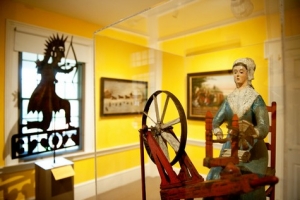
On August 18, 2013 the Shelburne Museum in Shelburne, VT will open its new Center for Art and Education. Historically a seasonal museum, the Shelburne will stay open year-round after the Center’s inauguration for the first time in the institution’s 66-year history.
The Center for Art and Education, which was designed by the Boston-based architecture firm, Ann Beha Architects, boasts 18,000-square-feet and will allow the Shelburne Museum to expand their exhibition offerings as well as implement new programming. The Center is part of the $14 million capital campaign “The Campaign for Shelburne Museum.” The campaign includes an endowment to maintain the center as well as the installation of a fiber-optic communications network throughout the Shelburne’s site, which spans 45 acres.
Founded by pioneering American folk art collector Electra Havemeyer Webb (1888-1960) in 1947, the Shelburne Museum holds one of the most remarkable and diverse collections of art and Americana. The museum’s 150,000 holdings include Impressionist paintings, folk art, quilts, textiles, decorative arts, furniture, American paintings, and various artifacts dating from the 17th to 20th century, which are exhibited in 39 different buildings. Webb collected various 18th and 19th century structures including houses, barns, a lighthouse, a jail, and a steamboat to house her collection; 25 of the buildings are historic.
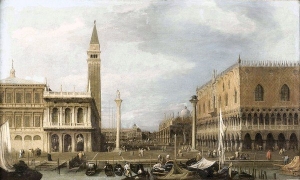
In 2000, the Denver Art Museum received a painting titled Venice: The Molo from the Bacino di S. Marco from the foundation of a deceased local collector. Covered in grime, the work was attributed to a student of the Italian 18th century painter Giovanni Antonio Canal (1697-1768), better known as Canaletto, and placed in storage.
In 2007, Timothy Standring, the museum’s curator of painting and sculpture, noticed the canvas while doing routine inventory. Standring saw past the layers of discoloration to the masterful brushstrokes and detailed figures that lay beneath the grime. Intrigued, Standring embarked on a Canaletto-based research project that eventually brought him to London to meet with Charles Beddington, a renowned expert on the artist. After their meeting, during which Standring presented a photograph of the painting, Beddington agreed to visit the Denver Art Museum to examine the painting in person.
In January 2012, Beddington arrived in the United States and identified the work as an authentic Canaletto; he also dated the painting 1724, meaning it is one of the artist’s earliest undocumented works. The museum soon received a grant from the European Fine Art Fair Restoration Fund to restore the painting, a job that was delegated to James Squires, the institution’s associate conservator of paintings. Over 100 hours of restoration later, Squire’s uncovered the masterpiece that was there along. The painting, which features a brightly colored Venetian scene, is currently on view at the Denver Art Museum.
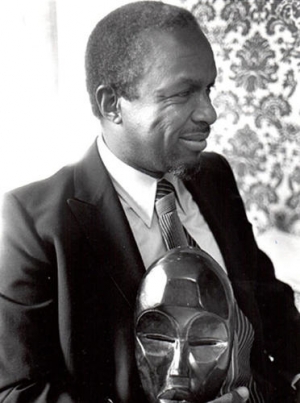
When Merton Simpson (1928-2013), a collector and dealer of African tribal art, passed away on March 9, 2013 he left behind a collection of museum-quality works said to be worth millions. Despite his illustrious holdings, Simpson’s family did not have enough money to give him a proper burial and his body is currently being held in a funeral home in Charleston, SC. Simpson’s son, Merton Simpson Jr., has started an email campaign asking friends of his father for contributions so that a proper funeral can be arranged.
Simpson’s care and art collection have been continuously prickly issues for his family with accusations of mismanagement and exploitation flying freely. Simpson, a celebrated abstract expressionist painter, was a pioneering champion of African art in the United States. Sadly, his remarkable archive and renowned collection have become a source of conflict between his friends, family, and staff members and most of his holdings are being detained in the Manhattan gallery, which he owned.
A will from 2011 was filed in Manhattan last week for Simpson naming his son, Merton Jr., as an executor and dividing most of his assets between his two sons, his brother, and a nephew. Simpson’s family is still waiting for the court to deem the 2011 will legally valid and to name an executor.
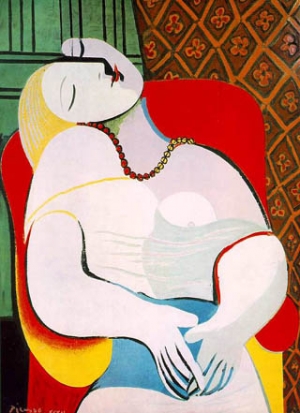
Steven Cohen, an American hedge fund manager and founder of SAC Capital Advisors LP, purchased Pablo Picasso’s (1881-1973) La Reve (1932) from casino tycoon Steve Wynn for $155 million. The sale marks the highest price paid by a U.S. collector for an artwork.
Cohen and Wynn have been in discussion about the sale since 2006. Originally, Wynn agreed to sell the painting to Cohen for $139 million but the transaction was cancelled after Wynn, whose vision is compromised, put his elbow through the canvas. The work has since been restored and the repair was factored into the selling price.
The sale comes less than two weeks after SAC Capital settled an ongoing insider trading case with the U.S. Securities and Exchange Commission for $600 million; it was the largest insider trading settlement in history. Cohen, who started collecting art in 2001, has an expansive collection that includes works by Vincent van Gogh (1853-1890), Edouard Manet (1832-1883), Willem de Kooning (1904-1997), Paul Cézanne (1839-1906), Andy Warhol (1928-1987), Jasper Johns (b. 1930), and Gerhard Richter (b. 1932).
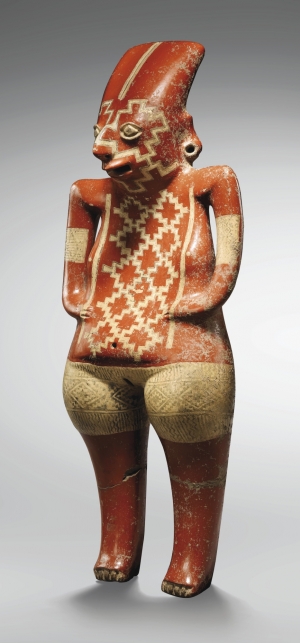
The remarkable Barbier-Mueller Collection of Pre-Columbian Art will be up for sale at Sotheby’s Paris on March 22 and 23, 2013. Comprised of approximately 300 works from Mexico, Central America, and South America and worth around $26 million, the Barbier-Mueller collection is the most important grouping of its kind ever offered at auction.
Swiss collector Josef Mueller (1887-1977) started building his collection after acquiring major works by Ferdinand Hodler (1853-1918) and Paul Cézanne (1839-1906) in Paris during the early 20th century. Mueller went on to develop an affinity for important works of Pre-Columbian art. The collection was later honed and expanded to include African art, Oceanic art, and Cycladic art by Mueller’s daughter, Monique, and her husband, Jean Paul Barbier-Mueller.
The works offered at Sotheby’s span the historical cultures that dominated the period from 1200BC to 1500AC and include objects in wood and stone, ceramics, textiles, and ritual items. Highlights from the collection include a Chupicuaro ceramic statue from 500-100BC that is expected to sell for approximately $2.6 million; a Maya ceramic head that Mueller purchased from the film director John Huston estimated to bring $200,000-$325,000; and an Aztec stone figure of a water goddess from 1300-1500 expected to garner over $650,000.
The Barbier-Mueller Collection of Pre-Columbian Art is on view at Sotheby’s until March 21, 2013.

The London branches of Sotheby’s and Bonhams will join forces with the Cologne-based auction house, Lempertz, to sell off works from the late Gustav Rau’s (1922-2002) vast collection. Rau, a well-known art collector and philanthropist, passed away suddenly in 2002, leaving his remarkable collection to Unicef’s German branch. Rau’s holdings, which include many Old Master and Impressionist paintings and sculptures, were estimated to be worth around $600 million at the time of the bequest.
While Unicef has sold a number of Rau’s works to fund ongoing projects over the years, this is the first time a significant portion of the collection has come up for sale. The auction, which is planned to take place this summer, will feature works by Jean-Honoré Fragonard (1732-1806), El Greco (1541-1614), and Claude Monet (1840-1926) among many others. The works are all in pristine condition as Rau either left his collection in storage or offered them to museums for exhibition purposes rather than hanging them in his own home.
All proceeds from the sales will benefit children’s causes, specifically in emerging countries. Rau, who spent much of his life working as a doctor in Africa, was a champion of clean drinking water initiatives and better vaccination practices in developing areas. Unicef plans to use a large portion of the funds to finish a children’s hospital in the Democratic Republic of the Congo that Rau founded before his death.
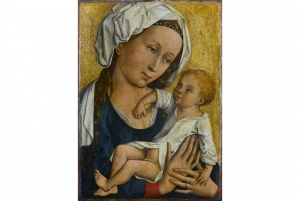
Germany’s Staatsgalerie Stuttgart museum returned a 15th century Renaissance painting stolen by Nazis during World War II to the estate of a Jewish art dealer. The museum acquired Virgin and Child, which is attributed to the Master of Flémalle (1375-1444) who is identified by historians as Robert Campin, in 1948.
The painting once belonged to Max Stern (1904-1987) who lost over 400 paintings to the Nazi regime during a forced sale in 1937. After Jews were banned from selling art in Nazi-occupied Europe, Stern shuttered his Dusseldorf gallery and escaped to London in December of the same year. Before settling in Montreal, Stern sold even more paintings, including Virgin and Child, in order to buy a German exit visa for his mother. Stern went on to purchase the Dominion Gallery of Fine Arts and established himself as one of Canada’s most important art dealers and collectors.
Upon his death in 1987, Stern donated a portion of his estate to Concordia and McGill Universities in Montreal as well as the Hebrew University in Jerusalem. For the past ten years Concordia has been working to recover the hundreds of paintings Stern lost at the hands of the Nazis. The initiative, known as the Max Stern Art Restitution Project, has facilitated the return of 9 works originally belonging to Stern; Virgin and Child is the 10th and the only work to be returned from a German museum thus far.
A ceremony was held on Tuesday, March 5, 2013 at the Canadian Embassy in Berlin to celebrate the painting’s return.
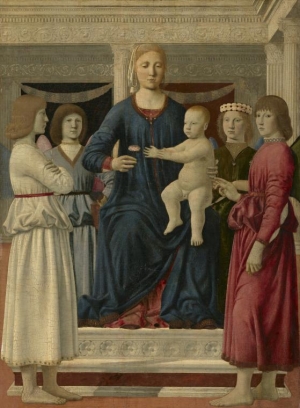
Seven works by the renowned Italian painter Piero della Francesca (1411/13-1492) are currently on view at the Frick Collection in New York. Piero della Francesca in America is the first monographic exhibition in the United States to focus on Piero, one of the founding figures of the Italian Renaissance.
Among the seven works on view at the Frick are six panels from the Sant’Agostino altarpiece (1454-69), a work commissioned for the Church of St. Agostino in Piero’s native Borgo San Sepolcro. Soon after the altarpiece was completed, it was dismantled, removed from the church, and the panels dispersed. Eight panels survive to this day including the four belonging to the Frick, three more, which are housed in European museums, and another belonging to the National Gallery in Washington, D.C.
The Frick’s reunion of the six panels is the largest reassembly from Piero’s masterpiece ever to appear on display. The panels are accompanied by the Virgin and Child Enthroned with Four Angels (circa 1460-70), the only intact altarpiece by Piero in the United States. Acquired by Sterling Clark (1877-1956), the heir to the Singer Sewing Machine fortune and an avid art collector in 1913, the work is now part of the Sterling and Francine Clark Institute’s collection in Williamstown, MA.
The exhibition, which is on view in the Frick’s oval room, is accompanied by a number of lectures, gallery talks, and seminars. Piero della Francesca in America will be on view through May 19, 2013.
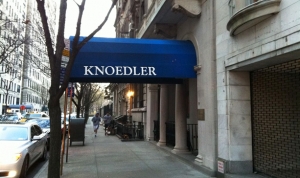
Prominent Canadian art collector David Mirvish filed a lawsuit on Friday, February 22, 2013 against the disgraced New York-based art gallery, Knoedler & Company. Since closing its doors in late 2011, Knoedler & Company has been accused by multiple clients of selling forged paintings, which were acquired by the gallery from Long Island dealer Glafira Rosales. Mirvish’s is the fifth lawsuit against Knoedler since 2011.
However, Mirvish’s claim is slightly different than its predecessors. While the other lawsuits accused Knoedler of passing off fake Jackson Pollock (1912-1956), Robert Motherwell (1915-1991), and Mark Rothko (1903-1970) paintings as the real deal, Mirvish claims that the works he purchased from the gallery were authentic. Instead, Mirvish is arguing that he lost out on millions of dollars in profits when Knoedler failed to sell three Jackson Pollock masterpieces he purchased jointly with the gallery.
Between 2002 and 2007 Mirvish purchased two paintings attributed to Pollock and bough a half stake in a third for $1.6 million. The sole purpose of Mirvish’s dealings with Knoedler was to resell the works for a profit. One of the Pollock paintings sold to collector and hedge fund manager Pierre Lagrange for $17 million in 2007, but in 2011, the day before Knoedler shut down, Lagrange announced that he would be filing a lawsuit against the gallery as forensic testing suggested the painting was a fake. The Lagrange suit was eventually settled but Mirvish was not involved and refused to return the money he made off of the deal.
Mirvish is now seeking reparations for the two unsold Pollocks, claiming that Knoedler breached its agreement when the gallery suddenly went out of business. Mirvish is asking Knoedler to return the two paintings, referred to as “Greenish Pollock” and “Square Pollock,” as well as reimburse him for his $1.6 million stake in the third painting, referred to as “Silver Pollock.” Even though Mirvish only paid Knoedler $3.25 million, half of “Greenish Pollock” and “Square Pollock’s” purchase prices, he claims that Knoedler’s violation of contract entitles him to both paintings.
Nicholas Gravante, the lawyer of Knoedler’s former president, Ann Freeman, is representing Mirvish. Freeman is not named as a defendant in Mirvish’s case and she has maintained that all works acquired from Rosales are genuine. Rosales is currently under investigation by the F.B.I.
|
|
|
|
|